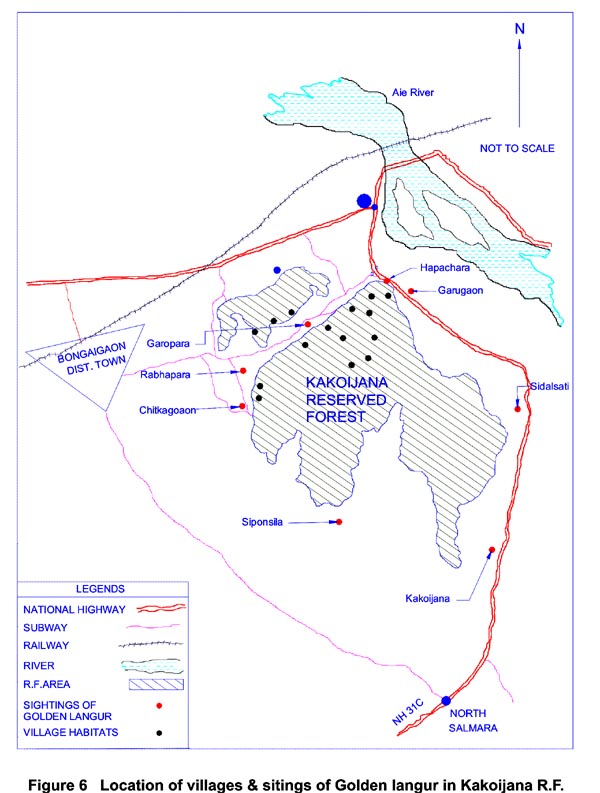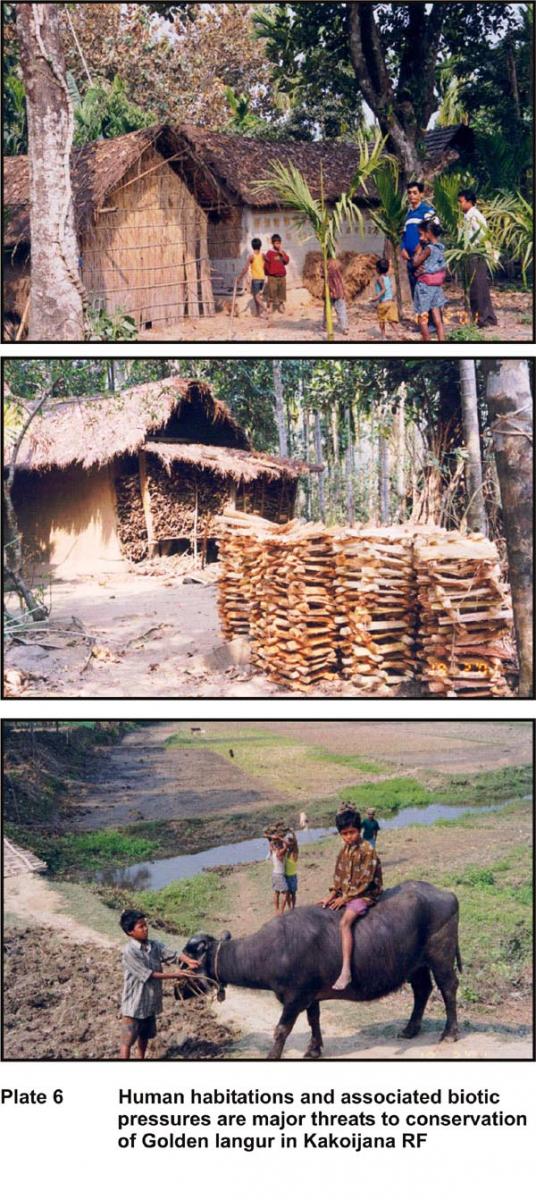Evaluation Of Ecological Impacts

|
The background air and water quality obtained from monitoring data and projected changes based on modeling data provided by BRPL and EIL and as also determined based on interpretation of the project profile does not portend any direct primary threat to the ecological components of the area. On the contrary, the integrity of some of the valued wildlife habitat within the study area which are unique. in terms of their wildlife values, and genetic diversity and command high priority for conservation have been challenged by a multitude of threat factors that are unrelated to the proposed expansion in the refinery complex.
The existing levels of the biotic pressures and environmental threats are too serious to ensure the conservation of the biodiversity values of both the terrestrial and the aquatic ecosystem in the study area even in absence of any major development initiative. Some of these merit discussion here.
-
The reserve forest of Nakatti and Bhumeshwar that historically supported rich and diverse plant and animal communities have been reduced to highly degraded and unproductive habitats as a result of unsustainable pressures of relentless wood cutting and grazing. These depleted wildlife habitats that harbour being encroached upon for cultivation.
-
The Kakoijana Reserved Forest is perhaps the only single ecosystem that can be recognized as one of the most valued ecosystem within the study area on account of its unique values (already discussed in section 4) and high conservation significance as a habitat for Golden langur and many other rare and endangered species. This 17.24 km2 of wilderness area engulfed by the villages and settlements (Fig. 6) and fragmented by cris-crossing tracts and pathways created by ingressing human population has disrupted the contiguity of this prime habitat of Golden langur over the years. The resultant smaller fragmented habitats have forced constriction of the three troops known in this area to smaller territories. The ongoing destructive forces continue to build up stress on the survival of species. Individual animals and sometimes small troops abandoned these forests to take shelter in the surrounds of human habitation. The troop sited by WII team near Hapachara village represented the population that frequently stray out of the Kakoijana R.F. and approached settlement in the search of food. This adaptive behavior of purely arboreal species is a result of compulsion brought about by scarcity of food and widespread degradation of its habitat in Kakoijana R.F. The other prevailing threats to the survival of the Golden langur in the outskirts of the forests are from the existence of National Highway - 31 and the electric line between the R.F. and the Hapachara village. There have been reported incidences of mortality of individual during road crossing by electrocution (Pers. Comm., N. K. Dey, 2001). The persistent threats also stem from enlarging areas under habitations, exploitation of forests for collection of fuel wood by local people (Plate 6). Encroachment of forest for cultivation. stone quarrying and political insurgency in the State are other factors that have threatened the Kakoijana R.F.


-
Though sincere attempts are being made by the forest department of protect the Kakoijana R.F. through the formulation of Forest Protection Committees and awareness raising programmes as collaborative initiative with local NGO's, greater political will and urgent efforts are needed to enforce protection before the destructive and degenerative trends wipe the endangered species out of this isolated pocket, yet crucial and one of the last remaining stronghold of Golden langur before the developments proposed in the area even break grounds.
-
Wetlands like Bhosamari, Parpola, Karorani and Naodara that enjoyed good status as wetland habitats till recent past are now experiencing increasing colonizing for agriculture.
-
Treated effluents from BRPL leaving the treatment plant drain into Tunia nala that ultimately drain into Tunia river which is one of the major water body within the study area. This river after passing through the outskirts of Bongaigaon township becomes a major receiving water body for sewage, waters from railway colony and workshop and the effluents from several small industrial units. These pollutants from diverse sources have greatly reduced potential of this river as a wetland habitat. This is even evident from the list of birds sighted in Tunia river (refer Table 7 in the preceding section of this report).
-
Aie river is the only major water body occupying most of the northern part of the study area. The river has been a habitat of several species of wetland birds. Some of the species reported from the river during Asian water fowl census in the year 1996 are Indian shag, Little cormorant, Rudy shelduck, Spot billed duck, Goosander, Little ringed plover, Common sand piper and Temmincks stint Osprey. This riverine habitat is being increasingly threatened by fishing, and mining and hunting.
|
Last Updated: September 28, 2015











